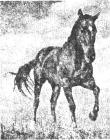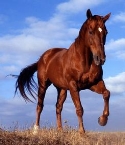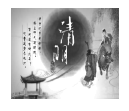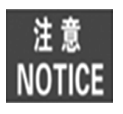-

The traditional Chinese lunar calendar divides the year into 24 periods. Winter Solstice(冬至), the 22nd period of the year, begins this year on Dec 22 and ends on Jan 4.
On the first day of Winter Solstice, the sun shines directly at the Tropic of Capricorn(南回归线). As a result, the northern part of the world experiences the shortest day and the longest night in the year. From then on, the days become longer and the nights become shorter. The Winter Solstice also marks the arrival of the coldest season in the year. Here are three things you should know about Winter Solstice.
The Winter Solstice Festival
There was a saying that went in ancient China, “The Winter Solstice is as important as the Spring Festival.” As early as Zhou Dynasty (c.11th century-256BC), people honored the gods on the first day of the Winter Solstice, which was also the first day of the new year. The Winter Solstice became a winter festival during the Han Dynasty (206 BC-220AD).
Eating dumplings
During Winter Solstice in North China, eating dumplings is necessary for almost everyone. There is a saying that goes “Have dumplings on the first day of Winter Solstice and noodles on the first day of Summer Solstice.”
Eating rice cakes
During the Winter Solstice, people in Hangzhou traditionally eat rice cakes. In the past, people used to make rice cakes themselves to honor ancestors there. Today, though few families have home-made cakes, people there still buy rice cakes for the Winter Solstice Festival.
1.Why does the northern world enjoy the shortest day on Dec 22 this year?
A.Because the southern part of the world enjoys the longest days.
B.Because the sun shines straightly at the Tropic of Capricorn.
C.Because the days get longer and the nights get shorter,
2.What does the underlined word “mark” mean?
A.打分 B.启动 C.标志
3.During Winter Solstice, people ________.
A.are supposed to eat the same kind of food
B.memorize the ancestors all over China.
C.keep the tradition of eating rice cakes in Hangzhou
4.Which of the statement is TRUE about the passage?
A.People started the custom of Winter Solstice thousands of years ago.
B.Winter Solstice lasts for less than 10 days this year.
C.The first day of Winter Solstice means the start of a new year now.
5.What is the main idea of the passage?
A.The introduction to Winter Solstice.
B.The customs on Winter Solstice.
C.The importance of Winter Solstice.
九年级英语阅读单选中等难度题查看答案及解析
-
The traditional Chinese lunar calendar divides the year into 24 solar terms (节气). Winter Solstice (冬至), the 22nd solar term of the year, begins this year on Dec 22 and ends on Jan 4.
On the first day of Winter Solstice, the Northern Hemisphere (北半球) experiences the shortest day and the longest night in the year, as the sun shines directly at the Tropic of Capricorn.(南回归线) 36. 1.. The Winter Solstice also marks the arrival of the coldest season in the year. As early as Zhou Dynasty (周期), people worshiped the gods on the first day of the Winter Solstice, which was also the first day of the new year. The Winter Solstice became a winter festival during the Han Dynasty. 37. 2.. On this day, both official. (官员) and common people would have a rest.
When midwinter comes, people always stay indoors. In this period, eating some nuts(坚果) is necessary, such as peanuts, walnuts, chestnuts, hazelnuts and almonds. 38. 3.. Traditional Chinese medical science teaches that nuts play an important role in nourishing the kidneys (肾脏)and making the brain and heart stronger.
During die Winter Solstice, people in Hangzhou traditionally eat rice cakes. In the past, before the winter solstice came, every family would make rice cakes to worship their ancestors or use as gifts for relatives and friends. 39. 4.. However, people there still buy rice cakes for the Winter Solstice Festival. Do you know more about Chinese traditional culture? Let’s share together and make a stronger and better China!
A. From then on, the days become longer and the nights become shorter.
B. They are good for our body.
C. Fewer families eat home-made cakes today.
D. The celebratory activities were officially organized.
E. During Winter Solstice in North China, eating dumplings is common at the festival.
九年级英语补全短文5选4中等难度题查看答案及解析
-
The traditional Chinese lunar calendar divides the year into 24 solar terms. Grain Rain (谷雨), as the last term in spring, starts on April 19 and ends on May 4.
Grain Rain comes from the old saying, “Rain brings up the growth of hundreds of grains”, which shows that this period of rainfall is very important for the growth of crops. Here’s something that you may not know about the Grain Rain.
1. ________
Grain Rain falls between the end of spring and the beginning of summer, and the temperature rises much higher than it does in March. With dry soil and heavy winds, sandstorms may happen more often.
2. ________
There is an old custom in southern China that people drink tea on the day of Grain Rain. Spring tea during Grain Rain is good for the eyes. It is also said that drinking tea on this day would prevent bad luck.
3. ________
People in northern China have the tradition to eat the vegetable toona sinensis during Grain Rain. An old Chinese saying goes “toona sinensis before the rain is as tender as silk (嫩如丝)”. The vegetable is good for the stomach and skin.
4. ________
The Grain Rain Festival is celebrated by fishing villages in northern China. Grain Rain marks the start of the fishermen’s first voyage (航行) of the year. The custom dates back to more than 2000 years ago.
1. When Grain Rain ends, ________ starts.
A. spring B. summer C. autumn
2.The underlined word “crops” refers to ________.
A. plants in the field B. trees in the forest C. fishes in the sea
3. The people in southern China ________ on the day of Grain Rain.
A. drink tea
B. eat toona sinensis
C. start the first voyage
4.We can infer that “toona sinensis” must be a kind of vegetable which ________.
A. can bring good luck
B. is delicious and healthy
C. grows at the seaside
5.The right order of the titles from 1 to 4 should be ________.
a. Eating toona sinensis
b. Sandstorms happen
c. Grain Rain Festival
d. Drinking tea
A. b-a-d-c B. b-c-a-d C. b-d-a-c
九年级英语阅读理解中等难度题查看答案及解析
-
The traditional Chinese lunar calendar divides the year into 24 solar terms. Grain Rain as the last term in spring, starts on April 19 and ends on May 4.
Grain Rain comes from the old saying, “Rain brings up the growth of hundreds of grains”, which shows that this period of rainfall is very important for the growth of crops.
Here is something that you may not know about the Grain Rain.
1.
Grain Rain falls between the end of spring and the beginning of summer, and the temperature rises much higher than it does in March. With dry soil and heavy winds, sandstorms may happen more often.
2.
There is an old custom in southern China that people drink tea on the day of Grain Rain. Spring tea during Grain Rain is good for the eyes. It is also said that drinking tea on this day would prevent bad luck.
3.
People in northern China have the tradition to eat the vegetable toona sinensis during Grain Rain. An old Chinese saying goes “toona sinensis before the rain is as tender as silk (嫩如丝)”.The vegetable is good for the stomach and skin.
4.
The Grain Rain Festival is celebrated by fishing villages in northern China. Grain Rain marks the start of the fishermen’s first voyage (航行)of the year. The custom dates back to more than 2000 years ago.
1.When Grain Rain ends, starts.
A. spring B. summer C. autumn D. winter
2.The underlined word “crops” refers to .
A. plants in the field B. trees in the forest
C. fishes in the sea D. tea in the south
3.The people in southern China on the day of Grain Rain.
A. drink tea B. eat toona sinensis
C. start the first voyage D. eat rice dumplings
4.We can infer that “toona sinensis”must be a kind of vegetable which____.
A. can bring good luck B. is delicious and healthy
C. grows at the seaside D. is good for the old
5.The right order of the titles from 1 to 4 should be .
a. Eating toona sinensis b. Sandstorms happen
c. Grain Rain Festival d. Drinking tea
A. b-a-d-c B. b-c-a-d C. b-d-a-c D. a-d-b-c
九年级英语阅读单选困难题查看答案及解析
-
The traditional Chinese lunar calendar (农历)divides the year into 24 solar terms (农历节气). Start of Winter(立冬), the 19th term of the year, begins on November 7 and ends on November 22 this year. Start of Winter shows the change of seasons. On this day, the sun’s rays reach an angle(角) of about 34 degrees to the earth. The temperature will drop quickly during this period, yet in Southern China weather remains mild(温和的), not too cold.
Here are five things to do about Start of Winter:
1. Greeting Start of Winter.
2. Winter swimming.
3. Eating dumplings.
4. Drinking mutton soup.
5. Keeping in good health from the cold.
1.How many days does Start of Winter last this year?
A.Eighteen. B.Seventeen. C.Sixteen.
2.Which of the following is FALSE?
A.Start of Winter shows the change of seasons.
B.Start of Winter begins on November 7 every year.
C.In Southern China weather remains mild, not too cold.
3.What do people NOT do during Start of Winter?
A.Take good care of the body.
B.Have dumplings and mutton soup.
C.Say good-bye to winter.
九年级英语阅读单选中等难度题查看答案及解析
-
The traditional Chinese lunar calendar divides a year into 24 solar terms. In the ancient days, they were important instructions for the farming production as well as people's daily lives. Here are four solar terms and some details about them.

Spring Equinox
It starts around March 21st. During this time, swallows fly back to the north. It is also a good time for people to fly kites and eat spring vegetables.

Summer Solstice
It begins around June 21st. To celebrate Summer Solstice, people often give colored fans to each other because fans can help them cool down.

Autumn Equinox
It starts around September 23rd. From Autumn Equinox, most of the areas in China will enter the cool autumn. It is a season for people to eat crabs and enjoy chrysanthemums(菊花)

Winter Solstice
It begins around December 22nd. It marks the arrival of the coldest season in the year.
People usually make and eat dumplings with their family members.
1.Spring Equinox begins around________.
A.March 21st B.June 21st C.September 23rd D.December 22nd
2.To celebrate Summer Solstice, people________.
A.eat spring vegetables B.give each other colored fans
C.enjoy chrysanthemums D.make and eat dumplings
3.________marks the arrival of the coldest season in the year.
A.Spring Equinox B.Summer Solstice
C.Autumn Equinox D.Winter Solstice
九年级英语阅读单选中等难度题查看答案及解析
-
According to the traditional Chinese lunar calendar, we officially welcome the Year of the Horse better than others.
The horse has played an important role throughout human history all over the world. Horses were used for thousands of years as a means of transportation, a weapon of war and a plougher of fields(犁地农具), but "the horse was more than just a vehicle - it had more character than a car, a tank or a tractor," Clare Balding wrote for The Telegraph.

In the Middle Ages in Western societies, the horse was a symbol of chivalry(骑士神)and nobility(贵族). In fact, the word "chivalry" comes from "cheval" in Old French, which meant horse. The idea of chivalry helped to fashion the 19th-century "gentleman", which was about good manners, courage and honesty to friends.
Nowadays, because of economic(经济) development, people in Western societies are less likely to see or ride horses. People living in cities, in particular, hardly ever experience horses except through movies, paintings or books. But horse racing, and betting .money on horse races, is still popular. The Kentucky Derby is one of the most popular sporting events every year in the US.
In the UK, the royal police still go around the city on horseback and the Queen rides in a traditional horse-drawn carriage on "ceremonial occasions (正式场合)”.
Some sayings about horses are still used in English today. For example, people still say "hold your horses" to mean “slow down". If someone seems too proud, people might tell him or her to "get off his or her high horse". And since horses are strong and energetic, there are expressions such as "as strong as a horse", "workhorse" and "horsing around". .
Interestingly, the horse also appears in many Chinese sayings, such as Qianlima, which means a talented person. Other Chinese horse sayings include Madaochenggong (instant success) and Baimawangzi (prince charming).
Besides their physical strengths, horses are smart and have "excellent memories", according to Discovery News. Maybe that's why Chinese people say, "An old horse never gets lost".
Since the horse is honored as a symbol of many great qualities, people born in the Year of the Horse are said to share them.
1.According to Chinese tradition, which year is welcomed best officially?
A. the Year of the Snake B. the Year of the Tiger
C. the Year of the Mouse D. the Year of the Horse
2.According to the passage, which is NOT the role of the horse nowadays?
A. A weapon of war.
B. The royal police's transportation to go around in the UK.
C. Race horses.
D. Animal actors in movies.
3.If a friend of yours is overconfident, what are you supposed to tell him or her?
A. Hold your horses. B. Get off your high horse.
C. Be as strong as a horse D. An old horse never gets lost
4.According to the passage, which is NOT the reason why people like horses?
A. The horse has played an important role throughout human history all over the world
B. The horse was a symbol of chivalry and nobility in the Middle Ages in Western societies.
C. Besides their physical strengths, horses are smart and have “excellent memories".
D. Horses are only used as a means of transportation like a car, a tank or a tractor.
5.From the passage we know that .
A. Economy develops a lot, so people in Western societies hardly see or ride horses nowadays.
B. The Kentucky Derby is one of the most popular betting events every year in the US.
C. Qianlima in Chinese means a person who can run one thousand kilometers a day.
D. Since the horse is honored as a symbol of many great qualities, people born in the Year of the Horse are said to be as strong as a horse.
九年级英语阅读理解困难题查看答案及解析
-
According to the traditional Chinese lunar calendar, we officially welcome the Year of the Horse better than others.
The horse has played an important role throughout human history all over the world. Horses were used for thousands of years as a means of transportation, a weapon of war and a plougher of fields(犁地农具), but “the horse was more than just a vehicle – it had more character than a car, a tank or a tractor,” Clare Balding wrote for The Telegraph.
In the Middle Ages in Western societies, the horse was a symbol of chivalry (骑士精神) and nobility(贵族). In fact, the word “chivalry” comes from “cheval” in Old French, which meant horse. The idea of chivalry helped to fashion the 19th-century “gentleman”, which was about good manners, courage and honesty to friends.
Nowadays, because of economic(经济) development, people in Western societies are less likely to see or ride horses. People living in cities, in particular, hardly ever experience horses except through movies, paintings or books. But horse racing, and betting money on horse races, is still popular. The Kentucky Derby is one of the most popular sporting events every year in the US.
In the UK, the royal police still go around the city on horseback and the Queen rides in a traditional horse-drawn carriage on “ceremonial occasions (正式场合)”.
Some sayings about horses are still used in English today. For example, people still say “hold your horses” to mean “slow down”. If someone seems too proud, people might tell him or her to “get off his or her high horse”. And since horses are strong and energetic, there are expressions such as “as strong as a horse”, “workhorse” and “horsing around”.
Interestingly, the horse also appears in many Chinese sayings, such as Qianlima, which means a talented person. Other Chinese horse sayings include Madaochenggong (instant success) and Baimawangzi (prince charming).
Besides their physical strengths, horses are smart and have “excellent memories”, according to Discovery News. Maybe that’s why Chinese people say, “An old horse never gets lost”.
Since the horse is honored as a symbol of many great qualities, people born in the Year of the Horse are said to share them.

1. According to Chinese tradition, which year is welcomed best officially?
A. the Year of the Snake B. the Year of the Tiger
C. the Year of the Mouse D. the Year of the Horse
2.According to the passage, which is NOT the role of the horse nowadays?
A. A weapon of war.
B. The royal police’s transportation to go around in the UK.
C. Race horses.
D. Animal actors in movies.
3. If a friend of yours is overconfident, what are you supposed to tell him or her?
A. Hold your horses. B. Get off your high horse.
C. Be as strong as a horse D. An old horse never gets lost
4. According to the passage, which is NOT the reason why people like horses?
A. The horse has played an important role throughout human history all over the world
B. The horse was a symbol of chivalry and nobility in the Middle Ages in Western societies.
C. Besides their physical strengths, horses are smart and have “excellent memories”.
D. Horses are only used as a means of transportation like a car, a tank or a tractor.
5. From the passage we know that ____________.
A.Economy develops a lot, so people in Western societies hardly see or ride horses nowadays.
B. The Kentucky Derby is one of the most popular betting events every year in the US.
C. Qianlima in Chinese means a person who can run one thousand kilometers a day.
D. Since the horse is honored as a symbol of many great qualities, people born in the Year of the Horse are said to be as strong as a horse.
九年级英语阅读理解困难题查看答案及解析
-
The Chinese tradition of giving gifts of money in red envelopes at Lunar New Year has turned into big business for Web giants Alibaba and Tencent, which now both offer electronic "hong bao".
At the end of each lunar year, it is common in China to give children hong bao -- some money in envelopes that are red, the colour of success. But now the old also take part in this activity.
It is now possible to exchange "red envelopes" with smart phone, which is popular in China and has caused a battle(战争) for the lucrative market between the two companies providing the service, Tencent and Alibaba.
"You don't have to pay the same cost or wait as long as you would for a traditional bank transfer(转账). It's more convenient, simple and fun," Wang Le, a 28-year-old Beijinger, told AFP. " With electronic red envelopes, you're not limited by your identity(身份) or the time of year. It's a new, fresh way of playing the game."
The idea was introduced in 2014 by WeChat, a mobile messaging system with over 400 million users and run by Tencent, China's largest Internet service system. It was successful at once.
This year, Alipay Wallet(阿里支付宝), the payment system run by Alibaba, is ready to take on the competition. It is allowing its 190 million users to send digital gifts, especially on the Twitter-like Sina Weibo.
For the past few weeks a digital battle has been terrible, with Tencent banning (禁止)Alipay from sending red envelopes on WeChat, saying they were at a risk. Recently, WeChat also blocked(封锁) Alibaba's music app Xiami.
To attract the public's attention, the two companies have launched lotteries through which they award red envelopes to users in an online game.
It's easy to send and receive hong bao or take part in the lotteries: you simply need to register (登记)your bank details.
According to market research group iResearch, Alipay controls 82.6 percent of the Chinese mobile phone payment market, compared to 10 percent for Tencent's Tenpay.
1.Which Web giants now offer electronic "hong bao"?
A. Alibaba B. Tencent C. Alibaba and Tencent D. Sina Weibo
2.According to the passage, what’s the popular trend for people to send “red envelopes” ?
A. Sending "red envelopes" through short messages
B. Sending "red envelopes" through vedios.
C. Sending "red envelopes" through smart phones.
D. Sending "red envelopes" through Express.
3.What does the underlined word “lucrative” mean?
A.利润丰厚的B. 富有想象力的C. 平滑的 D. 好奇的
4.Which one is TRUE according to the passage?
A. Tencent allows Alipay to send red envelopes via Wechat.
B. The idea of electronic red envelope was introduced by Wechat in 2014.
C. It’s complicated (麻烦的) to send and receive hongbao or participate in the lotteries.
D. Alipay controls a smaller payment market of the Chinese microphone than Tencent’s Tenpay.
5. What’s the main business purpose for Tencent and Alibaba launch lotteries?
A. To catch the new fashion on the website.
B. To raise money from netizens.
C. To obtain a better reputation.
D. To gain many more new App users.
九年级英语阅读理解中等难度题查看答案及解析
-
The traditional Chinese lunar calendar has 24 solar terms(节气). Qingming is one of them. When Qingming comes, the temperature goes up and rainfall increases. It’s a good time for spring ploughing(耕种), and people are busy planting trees in this time.
Qingming is also a festival, and it is called Tomb-sweeping Day. On that day, people hold a memorial ceremony(祭奠)for the dead.

If a driver breaks the following traffic rules, he will have to pay a fine (罚款)or be punished.
·Put on the seat belts first when driving cars.
·No drunk driving, smoking, or making phone calls while driving.
·Slow down or stop to let passengers go first when driving close to crosswalks.
·Buses that carry too many people are not allowed.

The Unlikely Pilgrimage of Harold Fry
By Rachel Joyce
The novel tells a story of a 60-year-old man who lives a boring and unhappy life. One day, he received a letter from his old friend, who got a cancer. He set off to send his reply letter in deep shock and sorrow. 627 miles in 87 days, he walks depending on one belief that “his friend can survive as long as he walks”.

5G promises download speed is 10 to 20 times faster than what we have now. For example, you could download a whole film in just 1 second, according to Xinhua. Also, 5G promises to get away from nearly all processing delays(延迟). China has already tested 5G in some cities like Beijing and Hebei.

1.Qingming is regarded as _________.
A.the beginning of spring B.the warmest day of a year
C.Tree-planting Day D.both a Chinese solar term and a festival
2.When you drive, the first thing you must do is _________.
A.to make sure it is safe inside B.to turn on the radio
C.to put on the seat belt D.to see if the bus carries too many people
3.Who has got a cancer in The Unlikely Pilgrimage of Harold Fry?
A.A 60-vear-old man. B.Rachel Joyce.
C.A friend of the main character. D.All of the above.
4.People will prefer 5G network because _________.
A.it is popular in other parts of China B.other countries don’t have it
C.it is a new technology D.it has faster download speed
5.Which of the following is TRUE according to the information above?
A.Qingming is the most important festival in China.
B.Drivers who don’t slow down while passing the crosswalk will be fined or punished.
C.The man’s friend lived a long life because he didn’t stop walking.
D.Many parts of China have started using 5G.
九年级英语阅读单选中等难度题查看答案及解析